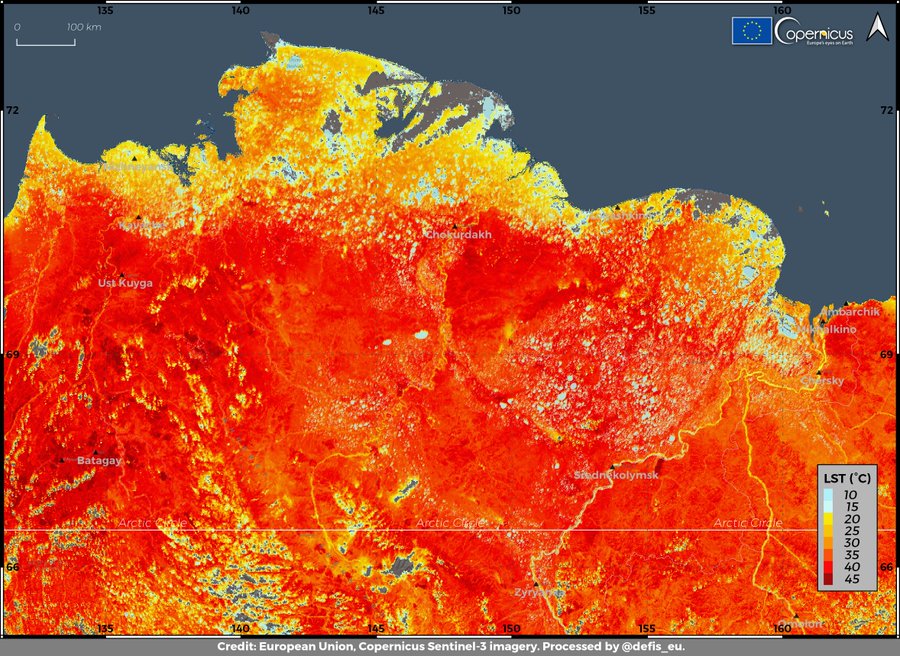Why it’s so damn hot in the Arctic right now
Siberia’s triple-digit heat wave and wildfires are a glimpse into the future of the Arctic.
By Umair Irfan Jun 23, 2020, 4:00pm EDT
Over the weekend, Verkhoyansk, Russia, hit a temperature of 100.4 degrees Fahrenheit. Researchers are still working to confirm the result, which may be recognized as a record high for the Arctic Circle.
And the small Siberian town isn’t alone. Much of Russia has been facing a heat wave in recent days, with multiple locations reporting temperatures as high as 113 degrees on June 19. The surprising warmth was also felt in other parts of the Arctic like northern Canada and Scandinavia.

It’s part of a pattern of soaring temperatures this year in what are ordinarily some of the coolest parts of the planet. The current searing weather of the region stands to have global consequences and foreshadows the future of the Arctic, and the planet, as the climate changes.
Russia is emerging from its hottest winter on record, and since the beginning of the year, temperatures have averaged 12.4 degrees Fahrenheit above what’s typical in Siberia.
And this polar heat has led to a string of woes for the region, from a major oil spill stemming from thawing permafrost to early wildfires north of the Arctic circle in Russia and Alaska.
Several key factors aligned in recent months to heat up the Arctic. And they’re building on top of long-term warming trends. That means more of this kind of heat is likely in the future, and so are thawing, fires, and climate disruption.
Why parts of the Arctic are so searingly hot right now The term “heat wave” is a relative measure. What temperatures count as a heat wave differ depending on the regional climate. It’s usually defined as temperatures above the 95th percentile of the historical distribution for a region.
So the bar for a heat wave in the Arctic is considerably lower than in lower latitudes. But the recent temperatures in the far north would be sweltering just about anywhere.
A heat wave begins with high atmospheric pressure building up over an area. A downward-moving air column compresses the air that’s closer to the ground, holding it still and heating it up. That high pressure also forces clouds away and around the column, creating an unobstructed line of light between the ground and the sun.
Over a period of days and weeks, the ground absorbs sunlight, and with stagnant air, heat accumulates and temperatures rise. “There’s nothing coming in and nothing going out,” explained Walt Meier, a senior research scientist at the National Snow and Ice Data Center at the University of Colorado Boulder. “It’s kind of like an oven basically.”
That’s the general formula for heat waves around the world. But there are also several unique ingredients contributing to the Arctic one.
In northern latitudes during the summer, there is near-continuous sunlight — even at night. That allows heat to accumulate faster than in areas that experience sunsets and can cool off in the evening.
continues at vox.com |





